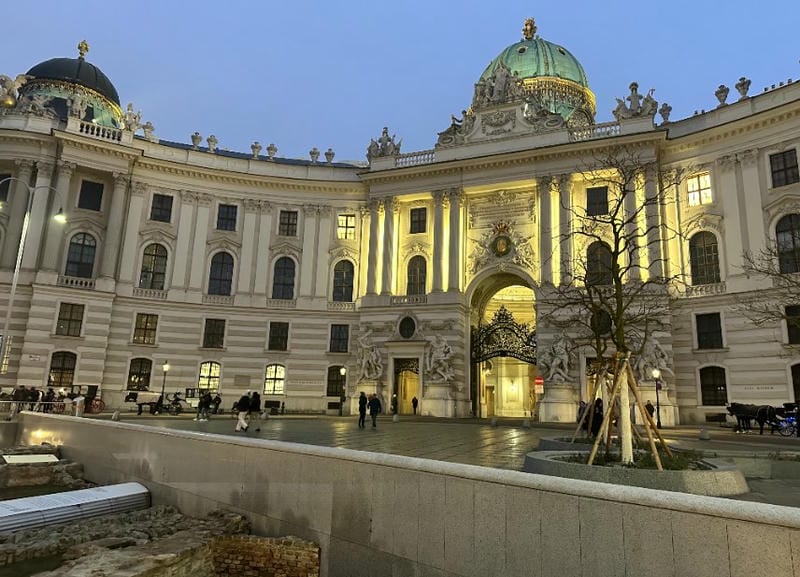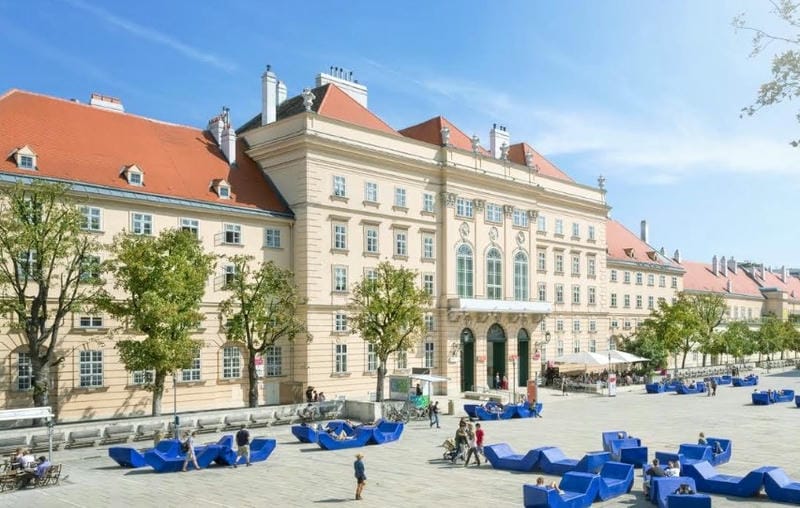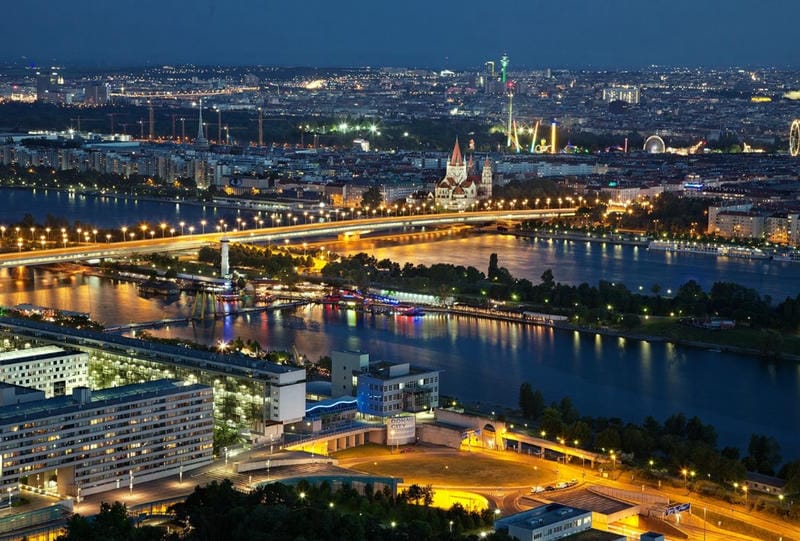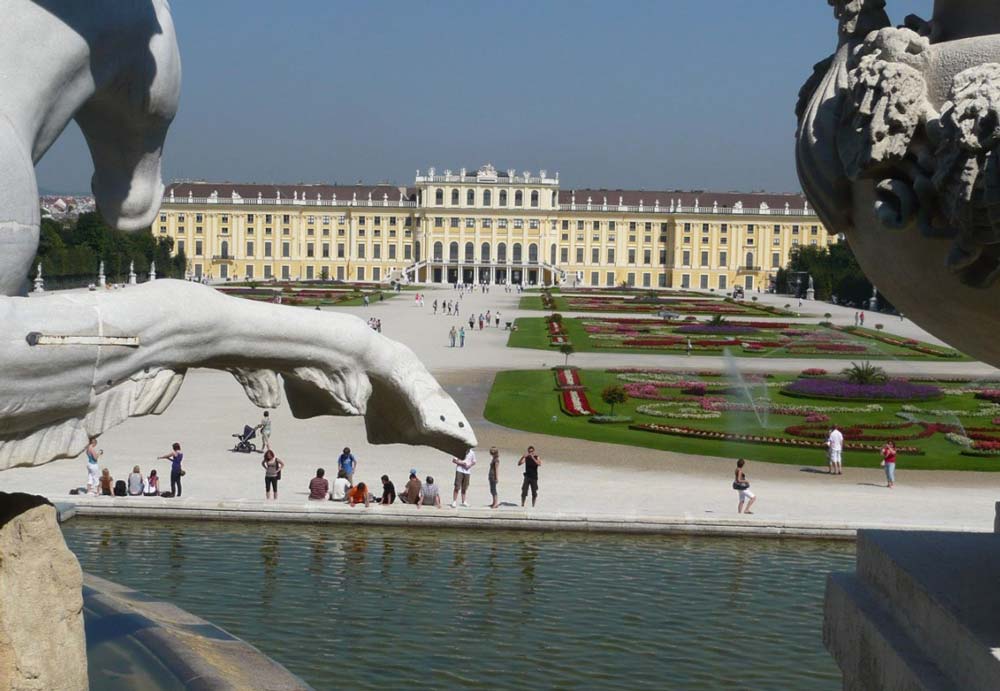Vienna, the capital of Austria, is a city steeped in imperial history, adorned with artistic treasures, and brimming with vibrant culture. Whether you’re gazing at Baroque palaces, strolling through lush gardens, or indulging in its renowned coffeehouse culture, Vienna offers an unforgettable experience. Its walkable city center and highly efficient public transportation system make it an ideal destination for travelers with a limited timeframe. Three days in Vienna give you just enough time to explore its iconic landmarks, delve into its artistic gems, and savor its culinary offerings while leaving space to embrace its charming hidden corners.
Day 1: Exploring Imperial Vienna

Your first day in Vienna is dedicated to unraveling its imperial grandeur. From majestic palaces to architectural marvels, this day sets the tone for your expedition.
Morning: Imperial Grandeur
1. Schönbrunn Palace
The day begins at Schönbrunn Palace, the former summer residence of the Habsburgs and one of Vienna’s most iconic attractions. Built in 1696, this UNESCO World Heritage Site offers a glimpse into the opulence of Austria’s imperial past.
The Grand Tour of the palace takes you through 40 ornately decorated rooms, including the Great Gallery, with its shimmering chandeliers, and the beautifully preserved apartments of Maria Theresa, Austria’s only female ruler. The unparalleled craftsmanship, intricate frescoes, and precious furnishings showcase the rich history of Viennese aristocracy.
Beyond its interior, Schönbrunn’s gardens are a masterpiece in their own right. Spanning over 300 years of horticultural history, they feature fountains, sculptures, and manicured flowerbeds. Don’t miss the Gloriette, a neoclassical structure offering sweeping views of the estate. The gardens are accessible year-round, providing a serene escape from the city’s bustle.
Insider Tips:
- Book tickets online to skip lengthy queues.
- Arrive early in the morning to beat the crowds and soak in the tranquility of the gardens.
2. Vienna State Opera House
Next, head to the Vienna State Opera House, an architectural gem that stands as a testament to Vienna’s deep-rooted love for classical music. Renowned for its world-class performances, this historic venue is a cultural hub for opera enthusiasts. Even if you don’t plan to attend a show, a guided tour is highly recommended to appreciate its neo-Renaissance design and fascinating history.
Afternoon: The Heart of Vienna
3. Hofburg Palace Complex
After lunch, make your way to the Hofburg Palace, an essential stop for any visitor to Vienna. This sprawling complex served as the seat of Habsburg power for over 600 years and is now home to several prominent attractions.
Start with the Sisi Museum, which offers an intimate look at the life of Empress Elisabeth (Sisi), Austria’s beloved yet enigmatic empress. Wander through the Imperial Apartments, adorned with lavish furnishings, and explore the Silver Collection, showcasing an impressive array of ceremonial and household items.
The Hofburg’s central location also offers access to stunning nearby sights like Heldenplatz and the tranquil Burggarten, perfect for a short stroll.
Insider Tips:
- Get a combination ticket to explore multiple sites within the palace.
- Plan your visit during the early afternoon to avoid peak hours.
4. St. Stephen’s Cathedral
Make your way to St. Stephen’s Cathedral, a Gothic masterpiece located in the heart of Vienna. Its towering spire is a defining feature of the city’s skyline.
Visitors can climb the South Tower for panoramic views or descend into the catacombs for a guided tour through centuries-old burial chambers. The interior of the cathedral is equally mesmerizing, with its intricate carvings, stained-glass windows, and sacred relics.
Evening: Strolling Through Old Vienna
5. Graben and Kohlmarkt Streets
Wrap up your first day with a leisurely stroll along Graben and Kohlmarkt, two of Vienna’s most elegant streets. These pedestrian-friendly avenues combine luxury shopping with historic charm. Along the way, stop by the iconic Café Central, where intellectuals like Freud and Trotsky once gathered, for an evening coffee paired with a slice of Viennese cake.
The bright lights and lively atmosphere of these streets offer the perfect end to your deep dive into Vienna’s imperial past.
Day 2: Art, Culture, and Local Flavors

Your second day in Vienna highlights its artistic side, from world-famous paintings to vibrant local markets.
Morning: Artistic Treasures
1. Belvedere Palace
Begin your morning at the Belvedere Palace, a striking Baroque landmark built as a summer residence for Prince Eugene of Savoy. The Upper Belvedere is home to some of the most celebrated works of art, including Gustav Klimt’s “The Kiss”, Monet’s tranquil landscapes, and masterpieces by Van Gogh.
The gardens connecting the Upper and Lower Belvedere boast a tiered design inspired by French landscaping, offering exquisite views and photo opportunities.
Insider Tips:
- Book tickets in advance, as Klimt’s works draw large crowds.
- Take your time exploring the gardens to enjoy their symmetry and elegance.
2. Kunsthistorisches Museum
Next on your cultural journey is the Kunsthistorisches Museum, a haven for art enthusiasts. Its vast collections include legendary works by Caravaggio, Vermeer, and Rubens. The museum’s interior design, featuring a grand staircase and an opulent dome, is itself a piece of art.
Allocate at least two hours to immerse yourself in this treasure trove of artistic masterpieces.
Afternoon: Local Markets and Architecture
3. Naschmarkt
The Naschmarkt is Vienna’s largest and most vibrant open-air market, making it the perfect spot for lunch. With over 120 stalls, it offers an eclectic mix of fresh produce, spices, and international cuisines.
Try local specialties like falafel, baklava, and Austrian cheeses. On Saturdays, the market transforms into an antique fair, adding to its charm.
Insider Tips:
- Visit during midday for the best food selection and a lively atmosphere.
- Bring cash, as not all vendors accept cards.
4. Karlskirche (St. Charles Church)
Conclude your afternoon with a visit to Karlskirche, a stunning Baroque church known for its intricately painted frescoes. Visitors can take an elevator to get an up-close view of the dome’s artwork. The reflection of the church in the surrounding pond creates a picture-perfect scene, especially at sunset.
Evening: Cultural Immersion
5. Attend a Performance at Vienna State Opera or Musikverein
End your day with an unforgettable evening of classical music. Opt for a performance at the Vienna State Opera or the Musikverein, known for its impeccable acoustics and prestigious concerts. Whether you’re a seasoned classical music aficionado or a casual listener, the experience is bound to be mesmerizing.
Day 3: Hidden Gems and Relaxation

Your final day in Vienna is all about uncovering hidden treasures and enjoying a more relaxed pace. From quirky architecture to serene parks, immerse yourself in Vienna’s lesser-known but equally captivating attractions.
Morning: Neighborhood Charm
1. Hundertwasserhaus
Start your day by visiting the Hundertwasserhaus, a colorful, unconventional apartment complex designed by the visionary artist Friedensreich Hundertwasser. With its vibrant façade, uneven lines, and lush greenery, this architectural marvel challenges traditional design notions and embodies the artist’s philosophy of harmonizing nature and human creativity.
While you can’t enter the apartments, the artistic vision is best enjoyed from the exterior or the nearby Hundertwasser Village, where you can find shops and a café set in the same quirky style.
2. Prater Park & Giant Ferris Wheel
A short trip brings you to Prater Park, an iconic amusement park known for its vintage charm. Its star attraction, the Giant Ferris Wheel (Riesenrad), has been a symbol of Vienna since 1897. Ride the Ferris wheel for panoramic views of the city while enjoying its nostalgic ambiance.
Prater Park is more than just rides—it offers open green spaces, walking paths, and small cafés, making it ideal for travelers of all ages. Spend your morning here soaking in the park’s relaxed vibe or enjoying a coffee with a scenic view.
Insider Tips:
- Visit the Ferris wheel early to avoid long lines.
- The park is free to enter, with pay-per-ride attractions.
Afternoon: Museums and Serenity
3. Albertina Museum
Art lovers should head to the Albertina Museum, which houses one of the most impressive art collections in Vienna. Renowned for its diverse exhibits, the museum showcases works by Monet, Picasso, and Dürer, alongside photography and modern art displays.
The Habsburg State Rooms, preserved in their original grandeur, provide a deeper glimpse into imperial Vienna. Even if you’re not an art enthusiast, walking through these former royal apartments is a memorable experience.
4. Stadtpark
After your museum visit, unwind at the Stadtpark, a lush, tranquil escape in the heart of Vienna. Known for its beautiful landscaping and picturesque bridges, the park is home to the iconic Johann Strauss golden statue, a favorite photo spot among tourists.
Find a bench near the pond, watch locals stroll by, and enjoy the soothing sounds of nature. For a light snack, stop by a nearby café or grab takeaway pastries to savor in the park.
Evening: Traditional Viennese Coffeehouse Culture
5. Café Central or Café Sacher
No trip to Vienna is complete without indulging in its legendary coffeehouse culture. Spend your final evening at one of the city’s historic institutions, such as Café Central or Café Sacher.
At Café Central, enjoy a Viennese Melange (a coffee similar to a cappuccino) alongside traditional pastries like apple strudel. Alternatively, head to Café Sacher to try the world-famous Sachertorte, a decadent chocolate cake layered with apricot jam.
These coffeehouses are not just places to eat—they are cultural experiences that exude the elegance and charm of old Vienna. Sit back, relax, and reflect on your three-day adventure while soaking in the sophisticated atmosphere.
FAQs About Visiting Vienna
1. What is the best time to visit Vienna?
Vienna is a year-round destination, but the best times to visit are spring (April to May) and autumn (September to October) when the weather is pleasant, and crowds are manageable. December is also magical due to Vienna’s famous Christmas markets.
2. Is Vienna expensive for tourists?
While Vienna is relatively affordable compared to other major European cities, it can get pricey if you’re on a strict budget. Save money by opting for public transportation, exploring free attractions like gardens and parks, and dining at local markets like the Naschmarkt.
3. How do I get around Vienna in 3 days?
Vienna boasts an excellent public transportation system, including trams, buses, and the U-Bahn (subway). For major attractions, take the U4 line to Schönbrunn or trams to Belvedere. Walking is particularly enjoyable in the city center.
4. What is the difference between the Vienna Pass and City Card?
- The Vienna Pass offers free entry to major attractions, including Schönbrunn Palace and the Giant Ferris Wheel. It’s ideal for those planning to visit multiple landmarks.
- The Vienna City Card provides unlimited public transport and discounts at various sites, making it perfect for budget-conscious travelers.
5. Are English-speaking tours available at major attractions?
Yes, most landmarks, including Schönbrunn Palace and the Hofburg, offer English-speaking guided tours. Some museums also provide multilingual audio guides.
6. Can I drink tap water in Vienna?
Absolutely! Vienna’s tap water comes from the Austrian Alps and is among the purest in the world.
7. What are some family-friendly activities in Vienna?
Families can enjoy attractions like Prater Park, the Natural History Museum, and the Haus der Musik (House of Music), which offers interactive exhibits for kids.
Practical Tips for Visiting Vienna
- Transportation Tips: Use the Vienna City Card for unlimited access to public transit. Download a city map to navigate U-Bahn and tram lines easily.
- Recommended Accommodations: Stay near the inner city (Innere Stadt) for easy access to top attractions. Mid-range hotels and boutique options are plentiful in this area.
- Tickets: Purchase tickets online in advance for major sites like Schönbrunn Palace, Hofburg, and Belvedere to avoid long lines.
Conclusion
Vienna’s seamless blend of imperial history, artistic treasures, and modern charm makes it a dream destination for travelers. In three days, you can explore iconic landmarks, delight in culinary pleasures, and uncover hidden gems that showcase the city’s unique character. Whether it’s the opulent Schönbrunn Palace, the vibrant Naschmarkt, or the timeless melodies of the Vienna State Opera, every moment in Vienna offers something extraordinary.
Plan your trip, embrace the city’s elegance, and let Vienna’s timeless beauty leave an indelible mark on your travel memories. Don’t forget to share your favorite spots and experiences—you might just inspire someone else’s Viennese adventure!
